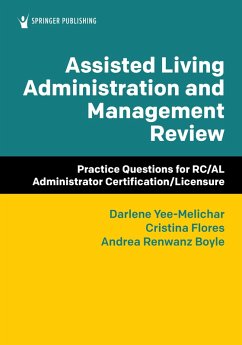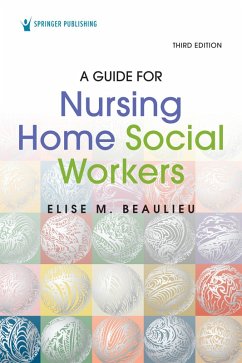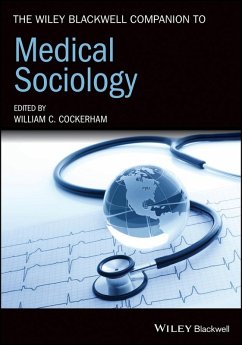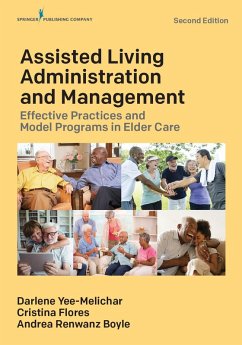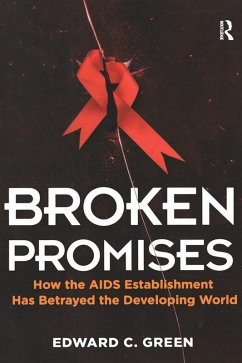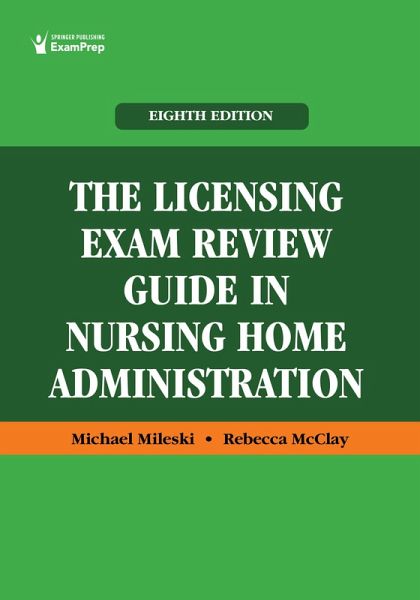
The Licensing Exam Review Guide in Nursing Home Administration (eBook, ePUB)
Versandkostenfrei!
Sofort per Download lieferbar
70,95 €
inkl. MwSt.
Weitere Ausgaben:

PAYBACK Punkte
35 °P sammeln!
"This book is an excellent resource for anyone preparing for the long-term care administrator exam." --Doody's Review Service, 3 starsIncludes 6 months' free ExamPrepConnect digital access with print purchase!Now in its 8th edition, The Licensing Exam Review Guide in Nursing Home Administration remains the most comprehensive question and answer review for anyone seeking nursing home administration licensure in the United States. With more than 1100 questions, including two online practice exams for both the Core of Knowledge Examination (CORE) and the Line of Service Examination for Nursing Ho...
"This book is an excellent resource for anyone preparing for the long-term care administrator exam." --Doody's Review Service, 3 stars
Includes 6 months' free ExamPrepConnect digital access with print purchase!
Now in its 8th edition, The Licensing Exam Review Guide in Nursing Home Administration remains the most comprehensive question and answer review for anyone seeking nursing home administration licensure in the United States. With more than 1100 questions, including two online practice exams for both the Core of Knowledge Examination (CORE) and the Line of Service Examination for Nursing Home Administration (NHA), the book tests your knowledge of the important concepts and topics related to the National Association of Long Term Care Administrator Boards (NAB) domains of practice- Care, Services and Supports; Operations; Environment and Quality; and Leadership and Strategy.
Key Features:
ExamPrepConnect Features:
Includes 6 months' free ExamPrepConnect digital access with print purchase!
Now in its 8th edition, The Licensing Exam Review Guide in Nursing Home Administration remains the most comprehensive question and answer review for anyone seeking nursing home administration licensure in the United States. With more than 1100 questions, including two online practice exams for both the Core of Knowledge Examination (CORE) and the Line of Service Examination for Nursing Home Administration (NHA), the book tests your knowledge of the important concepts and topics related to the National Association of Long Term Care Administrator Boards (NAB) domains of practice- Care, Services and Supports; Operations; Environment and Quality; and Leadership and Strategy.
Key Features:
- Contains more than 1100 multiple choice questions with answers and rationales
- Reflects the style and format of the National Association of Long-Term Care Administrator Boards (NAB) licensure exam
- Includes test-taking strategies for success
- Covers important updates and revisions in the field
- Offers on-the-go digital access with ExamPrepConnect
ExamPrepConnect Features:
- Review all the high-quality content from the book
- Get organized by using the personalized study plan based on your exam date
- Study by topic to identify your strengths and weaknesses
- Strengthen your knowledge with over 1100 questions and detailed answer rationales
- Prepare for exam day with 2 timed practice exams each of the Core of Knowledge Examination (CORE) and the Line of Service Examination for Nursing Home Administration (NHA)
- Connect and chat with fellow future nursing home administrators using the discussion board
Dieser Download kann aus rechtlichen Gründen nur mit Rechnungsadresse in A, D ausgeliefert werden.




